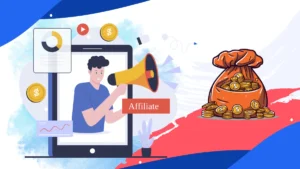Email marketing is an essential tool for businesses to engage with their audience, drive traffic, and boost sales. To maximize the effectiveness of your email campaigns, follow this comprehensive checklist that covers every aspect of the process from planning to analysis.
Planning Your Campaign
Define Your Goals
Start by identifying what you aim to achieve with your email marketing campaign. Common goals include:
- Increasing sales
- Driving traffic to your website
- Promoting a new product or service
- Building brand awareness
- Engaging with your audience
Identify Your Target Audience
Understand who your target audience is. Segment your email list based on:
- Demographics (age, gender, location)
- Behavior (past purchases, email engagement)
- Preferences (interests, needs)
Create a Content Calendar
Planning is crucial for a successful email marketing strategy. Develop a content calendar to schedule your campaigns, ensuring consistency and relevance. Include:
- Key dates (holidays, sales events)
- Themes for each email
- Deadlines for content creation and approval
Building Your Email List
Opt-In Forms
Place sign-up forms in strategic locations on your website, blog, and social media channels. Ensure they are:
- Easy to find and fill out
- Clear about what subscribers will receive
Incentives
Encourage sign-ups by offering incentives such as:
- Discounts or coupons
- Free resources (e.g., eBooks, guides)
- Exclusive content or early access
Double Opt-In
Use double opt-in to confirm subscribers’ email addresses. This involves sending a confirmation email to verify their interest. Benefits include:
- Higher quality email list
- Reduced risk of spam complaints
Compliance
Ensure your email marketing practices comply with regulations such as GDPR and the CAN-SPAM Act. Key requirements include:
- Clear consent for email communications
- Easy unsubscribe options
- Transparent data handling practices
Crafting Your Email
Subject Line
The subject line is your first impression. Make it:
- Compelling and attention-grabbing
- Clear and concise
- Reflective of the email content
Preheader Text
The preheader text provides additional context and can significantly impact open rates. Ensure it:
- Complements the subject line
- Provides a brief summary of the email content
Personalization
Personalize your emails to make them more engaging. Use:
- The recipient’s name
- Relevant content based on past interactions
Compelling Content
Create content that resonates with your audience. Focus on:
- Relevance to your goals and audience’s interests
- Clear, concise, and engaging writing
- A strong, clear call to action (CTA)
Visuals
Incorporate high-quality visuals to enhance your email. Use:
- Images, videos, and graphics
- Alt text for images to ensure accessibility
Designing Your Email
Mobile-Friendly Design
Ensure your email is responsive and looks good on all devices. Use:
- A single-column layout
- Large, easy-to-read fonts
- Touch-friendly buttons
Consistent Branding
Maintain brand consistency by using:
- Your brand’s colors, fonts, and logo
- A consistent tone and style
Readability
Make your email easy to read with:
- Clear fonts
- Proper formatting
- Adequate white space
Testing Your Email
A/B Testing
Conduct A/B tests to determine what works best. Test:
- Different subject lines
- Variations in content and CTAs
Email Preview
Preview your email on multiple devices and email clients to ensure it displays correctly.
Test Links
Verify that all links and CTAs are functional and lead to the correct destinations.
Spam Check
Use a spam checker tool to ensure your email doesn’t end up in the spam folder.
Sending Your Email
Optimal Send Time
Determine the best time to send your emails based on:
- Audience behavior
- Time zones
Segmented Lists
Send your email to the appropriate segmented lists to ensure relevance.
Frequency
Maintain a consistent email frequency without overwhelming your subscribers. Common frequencies include:
- Weekly
- Bi-weekly
- Monthly
Analyzing Your Results
Open Rate
Track the percentage of recipients who open your email. Factors that affect open rates include:
- Subject line
- Sender reputation
- Send time
Click-Through Rate (CTR)
Monitor the percentage of recipients who click on links within your email. A higher CTR indicates:
- Engaging content
- Effective CTAs
Conversion Rate
Measure the percentage of recipients who complete the desired action (e.g., making a purchase). This helps you assess:
- The effectiveness of your content
- The relevance of your offer
Bounce Rate
Keep an eye on the percentage of emails that couldn’t be delivered. High bounce rates can affect your sender reputation and may indicate issues with your email list.
Unsubscribe Rate
Track the number of recipients who unsubscribe from your email list. A high unsubscribe rate may indicate:
- Irrelevant content
- Too frequent emails
Optimizing Your Strategy
Analyze Data
Review your email performance metrics to identify trends and areas for improvement.
Feedback
Collect feedback from your audience to understand their preferences and pain points.
Iterate and Improve
Continuously test and refine your email marketing strategy based on data and feedback. Focus on:
- Enhancing subject lines and CTAs
- Personalizing content
- Optimizing send times
By following this comprehensive checklist, you can create effective email marketing campaigns that engage your audience, drive conversions, and achieve your business goals. Happy emailing!




